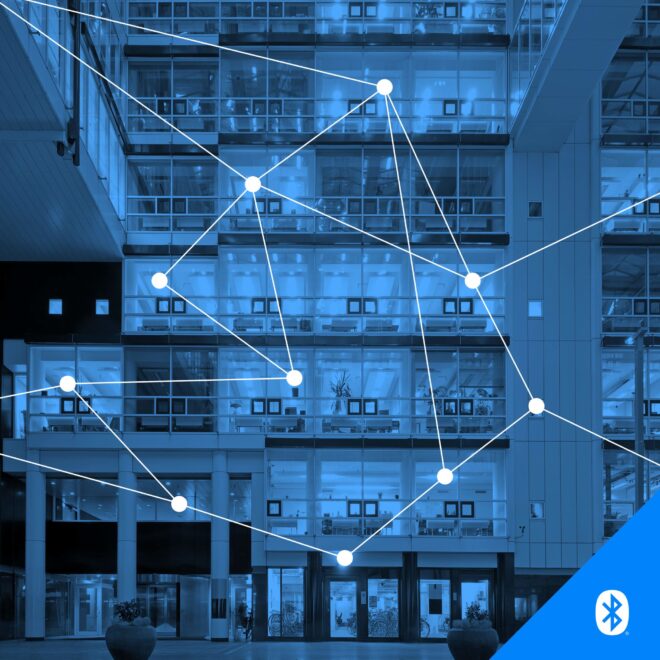Since lockdown was first initiated in our state in early 2020, I’ve taken the impact of COVID-19 seriously. But like everyone else, I am eager to see society start making significant strides toward a return to normalcy, and reopening businesses and schools is a big part of that return.
A major hurdle to a successful return is finding a safe middle ground that allows us to reopen businesses without risking the health and wellness of our community. Many experts believe that a critical part of reopening will require a reliable Exposure Notification System that lets us know where COVID-19 is and where it’s spreading.
Fortunately, Bluetooth® technology may be uniquely positioned to help governments and health organizations break the chain of infection and aid in expediting safe reopening around the world. Recently, the Bluetooth Special Interest Group (SIG) announced that work is underway to create a specification that will enable wearable devices to participate in an existing smartphone-based Exposure Notification System.
“Bluetooth® technology is one of the few technologies available that has the right combination of technical features, economies of scale, and developer ecosystem to take on the challenge of helping to determine where COVID-19 is in real time around the world.”
– Paul Elvikis, Laird Connectivity
What is an Exposure Notification System?
Typically deployed by a government health agency, an Exposure Notification System (ENS) leverages Bluetooth® technology embedded in smartphones to inform people when they have been in proximity to someone who was later diagnosed with COVID-19. The Exposure Notification System created jointly by Google and Apple, which enable apps developed by your local public health authority to send you a notification if you’ve likely been exposed, is a well-known example of an ENS.

Expanding ENS Beyond Smartphones
The foundation Google and Apple have developed, leveraging smartphones to aid in COVID-19 exposure notification, is an essential step stone to getting on the other side of this pandemic. However, smartphones on their own are not a practical approach to cover all segments of the population. In an effort to include other demographics that may not have consistent or reliable access to smartphone technology, such as children in primary school and older adults living in care facilities, the Bluetooth SIG is working to expand this exposure notification foundation to include wearables. Ideally suited to address gaps in population coverage, ENS wearables are key to helping better manage the pandemic overall.
“There are several population groups critical to managing the spread of diseases like COVID-19 with relatively low smartphone penetration, presenting a coverage challenge for smartphone-based Exposure Notification Systems,” said Elisa Resconi, a physics professor at the Technical University of Munich now leading research on non-pharmaceutical interventions against COVID-19. “We believe including wearable devices in an ENS would be a very effective method for extending its reach to support these important groups.”
Also, by expanding ENS technology to wearables, we can provide overlapping coverage for those with smartphones. There have certainly been instances where I’ve gone out for a walk or ran an errand and left my smartphone at home or in the car. An ENS wearable could serve as an exposure notification backup for those rare times when smartphone users are caught out in public without their phone.

How an ENS Wearable Works
At a high level, an ENS wearable works much the same way as an ENS-based smartphone. Using children in primary school as an example, most young children do not have smartphones, but parents may want to know if their child has been exposed to someone infected with COVID-19. An ENS-enabled wristband that the child wears can be paired with their parent’s smartphone using an ENS app.
The wristband broadcasts unique, random IDs. Throughout the day, the wristband exchanges random IDs with other nearby ENS-enabled devices, storing all received IDs. Periodically, the wristband connects to the parent’s smartphone and uploads its list of recently received IDs. The smartphone can then retrieve the list of IDs associated with positive COVID-19 cases and compare it to the list of received IDs from the wristband. If the ENS app discovers any matches, it immediately sends out a notification with further instructions.
Check out this ENS infographic to see a complete overview of how this technology works.
![]()
FEATURED INFOGRAPHIC
Extending an ENS to Support Wearable Devices
See how an Exposure Notification System can better address population groups critical to managing a pandemic by supporting wearables such as wristbands.
How Effective is an ENS?
One infection can be averted for every one to two users of the system.
In combination with other non-pharmaceutical measures like social distancing, an ENS can be a powerful tool to help stop the spread of infection. According to research published by a team at Oxford University, an ENS can be effective at any level of uptake with a general rule that one infection can be averted for every one to two users of the system.
While an ENS has a positive effect even at low levels of adoption, the more people who participate the more effective an ENS becomes. In fact, the same research estimated that even if an ENS was the only method being used to contain the virus, an adoption level of approximately 60 percent could completely stop the spread of COVID-19. When deployment of an ENS is combined with other measures, such as wearing masks and practicing social distancing, as is typically the case, the adoption level required to stop the spread is much lower.
Bluetooth ENS Interoperability
A reliable, interoperable ENS that expands coverage to all population groups is an essential element of any safe-return solution. Recognizing the need for expanding existing smartphone-based ENS, more than 130 Bluetooth® member companies have joined the Bluetooth SIG Exposure Notification Working Group (ENWG) to define a standardized method for adding support for wearable devices while preserving the same privacy and security protections of the ENS. The ENWG is open to all Bluetooth SIG member companies and serves as a centralized forum for discussion on the effective use of Bluetooth technology in slowing the spread of COVID-19 and other infectious diseases.
“It is incredibly inspiring to see the Bluetooth community’s collaboration in finding and creating innovative ways to leverage Bluetooth technology to address the COVID-19 pandemic,” said Mark Powell, CEO of the Bluetooth SIG. “We are grateful for the dedication and commitment of the Bluetooth members and proud of their work on this important effort.”
Additionally, the standardization that Bluetooth® technology provides is critical to ensuring that wearables created by different manufacturers will not only work with all existing smartphone technology but will also be compatible with and able to communicate with one another.
“Bluetooth® technology is the best solution available today for contact tracing and other safe-return solutions. It is reliable, easy to deploy, data privacy friendly, and available on 100% of smartphones worldwide. It is no wonder Apple and Google also chose Bluetooth technology for their contact tracing API, and we fully agree.”
– Ege Akpinar, Pointr
Moving Forward on the Path to Recovery
Technology is one of many critical tools needed to stop this pandemic, and it is a key factor in executing a safe reopening. A reliable, easy-to-deploy ENS is an especially important part of any safe-return strategy, and by providing a solution for key population groups that are currently unaccounted for, we can enable a higher level of exposure notification participation. This is paramount. The more people who can participate, the more effective the solution will be, and the sooner we can make significant steps toward global recovery.
An initial draft of the ENS specification is expected to be released and available for review within the next few months. For more information on the importance of adding wearables to an ENS and to stay informed when drafts of the specification are released, visit bluetooth.com/ens.
![]()
FEATURED INNOVATION
Why Add Wearables to an ENS?
See how the Bluetooth® community is helping extend the reach of Exposure Notification Systems.























